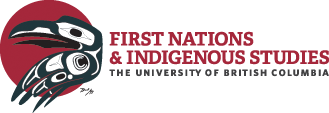Sixties Scoop
The Sixties Scoop & Aboriginal child welfare In the case of Aboriginal mothers, stories of government involvement in family life often go back generations. The legacy of removing…
Métis
The term Métis refers to a collective of cultures and ethnic identities that resulted from unions between Aboriginal and European people in what is now Canada. Métis stems…
Powley Case
R. v. Powley [2003] R. v. Powley was the first major Aboriginal rights case concerning Métis peoples. The Powley decision resulted in “the Powley Test,” which laid out…
Aboriginal Fisheries in British Columbia
In this section Introduction Fishing Since Time Immemorial Coast Salish Harvesting Methods The introduction of canneries and a wage-based economy The creation of an Aboriginal “food fishery” Aboriginal…
Ipperwash Crisis
During World War II, the federal government decided to build a military camp on reserve land occupied by the Stony Point First Nation and located in Ipperwash Provincial…
UN Declaration on the Rights of Indigenous Peoples
What is the UNDRIP? From the Ninth Session of the Permanent Forum on Indigenous Issues. New Zealand delegation celebrates the endorsement by the Government of New Zealand of…
Cedar
Cedar is a well-known symbol of the Northwest Coast. For thousands of years, coastal First Nations in British Columbia have the versatile wood in many aspects of their…
Totem Poles
What are totem poles? House frontal poles outside the Haida Heritage Centre, Kaay Llnagay, BC. Photo (c) 2010, Robyn Hanson. Totem poles are monuments created by First Nations…
Marginalization of Aboriginal women
A Brief History of the Marginalization of Aboriginal Women in Canada Aboriginal women in Canada frequently experience challenges and discrimination that are not necessarily shared by non-Aboriginal women,…
Gustafsen Lake
Overview of the Gustafsen Lake Stand-off Gustafsen Lake or Ts’Peten, a region close to 100 Mile House in British Columbia, in Secwepemec (Shuswap) territory, was the location of…

